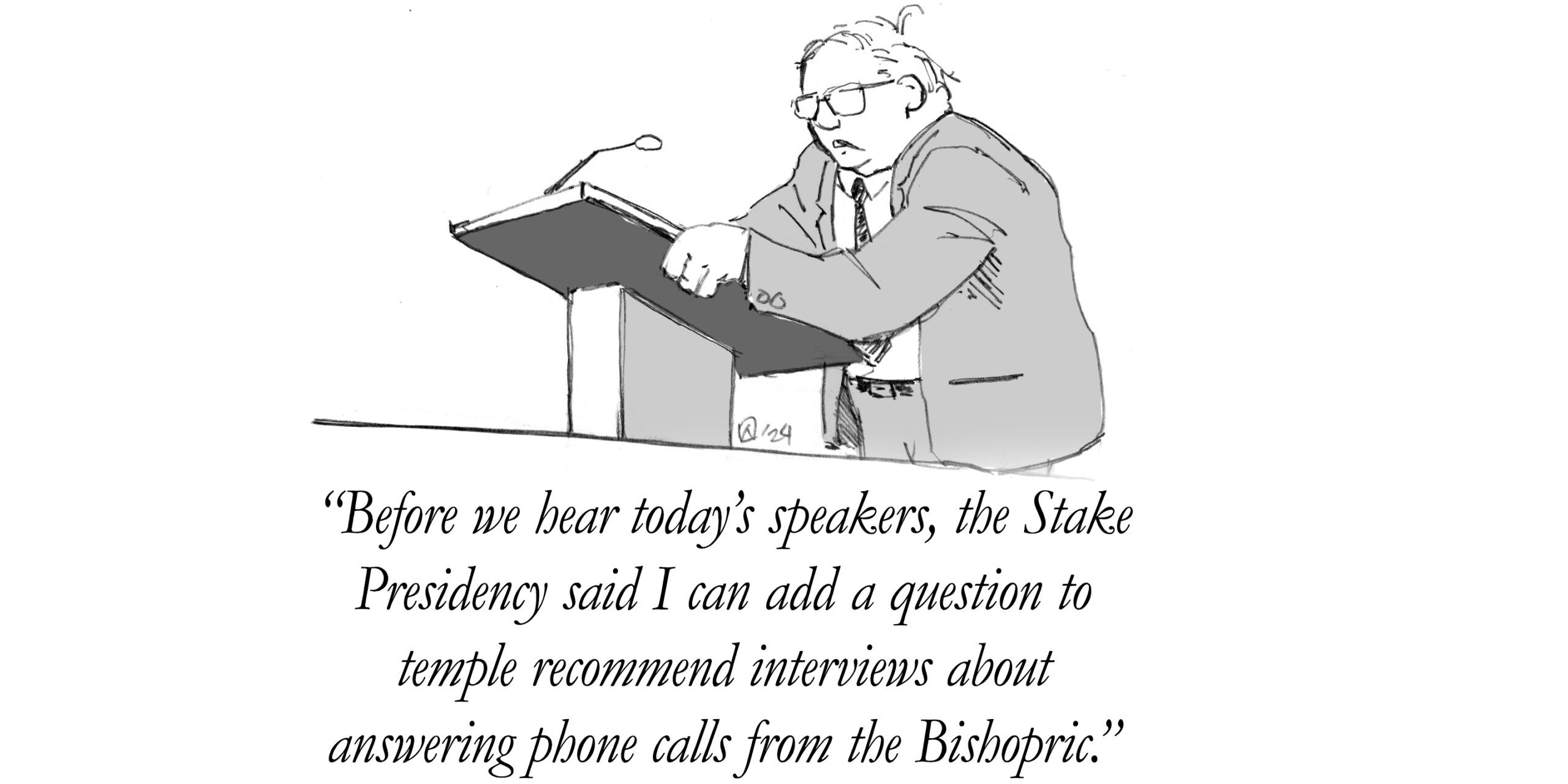In Parts I and II of this series, I described two fundamentally different conceptions of the self: the expressive self, which prioritizes autonomy, authenticity, and expression; and the value-responsive self, which takes moral (and other) truth as given and seeks to respond affirmatively and align one’s life with it. What difference does this identity distinction make in discussions of sex, gender, and sexual morality?
Quite a lot, it turns out. The expressive self tacitly affirms the importance (even the preeminence) of the sexual sphere of life but is unable to give a coherent answer to what sex and gender are about. Instead, the expressive self remains trapped within its own feelings and self-perceptions. The value-responsive self, on the other hand, can approach sex as an aspect of human well-being and fulfillment that honors the full personhood of men and women and which naturally leads to new life. We investigate the first possibility today and the second in Part IV.
Sexuality and gender without mooring. The expressive self faces the same dilemma with respect to sex and gender that it faces in all areas of life: avoiding the slide to relativism that strong subjectivism entails. The expressive self urges us to look deep within for meaning and purpose. It teaches us that our feelings are the most important and foundational part of who we are and that we should be free from any external or unchosen standards or definitions. But the more the expressive self asserts that “my truth” is “true for me,” the more the world is drained of intrinsic meaning or purpose. As we saw in Part I, the expressive self is free, but it’s a freedom in which everything is as meaningful (or meaningless) as anything else.
Where does this leave sex and gender? Without a whole lot to provide grounding or mooring to it. Deferring to the expressive self tends to wear away the meaning of concepts, institutions, and moral norms that could provide such grounding. In this way, as noted in Part I, gender norms and “sex assigned at birth” come to be seen as threats to the individuality and authenticity of the self, as unjust external forces which seek to impose meaning on the self without its consent. Gender identity —“one’s innermost concept of self as male, female, a blend of both or neither—how individuals perceive themselves and what they call themselves”—is the trump card that can overrule any alternative claims about identity. Concepts such as “male” or “female” become a matter of self-identification rather than biology. The expressive self teaches us that our feelings are the most important and foundational part of who we are.
Marriage without meaning. Similarly, the assumptions of the expressive self undermine the meaning of social institutions such as marriage and family. Marriage was once understood as a union of a man and a woman that was by nature oriented towards children, but that definition proved too narrow for a world structured by the expressive self. The political battle for same-sex marriage was won in significant part due to the argument that gays and lesbians had the same right to have their desires recognized and legitimized as straight people had. Love is love; why should the law or society treat homosexual couples any different from heterosexual couples? Again, desire itself is the fact that is decisive.
Unsurprisingly, the reach of these arguments did not stop when same-sex marriage was legalized by the U.S. Supreme Court. The same arguments have also been used to justify polyamorous unions, which have now been legally recognized by multiple jurisdictions in the United States. But the end of this path is not polyamory but instead the withering away of anything that is remotely identifiable as “marriage.” The existence of a legal category such as marriage suggests that this relationship (however it is defined) is in some way different and special—it is something that the law (and society) approves of and, to some degree, encourages. But the expressive self chafes against unchosen standards for what sexual (or other) relationships should look like. Any expectations about what marriage should look like (e.g., that it be limited to two people, permanent, sexual, sexually exclusive, etc.) will inevitably leave some people out. Therefore, in this view, the institution needs to be dismantled.
“Family privilege” is a term used to identify how some family forms (e.g., marriage) are given special status and treatment that are denied to others. The think tank Family Story is dedicated to dismantling family privilege and seeks to create a world “in which any individuals bonded by love, support, or care for each other, who by choice or circumstance are interdependent, can be recognized as family.” They also believe that “the legal rights, benefits, and privileges of marriage should be available to unmarried people.” By seeking to widen the circle to include every expression of connection, commitment, and desire, the very concept of marriage dissolves.
There are also more extreme manifestations of the expressive self with respect to marriage. The New York Times ran a lengthy article on “fictosexuals,” people who are attracted to and have relationships—including marriages—with fictional characters. The article says this about one man who considers himself married to an anime character: “It was not his first marriage: He had divorced a woman several years earlier. His new relationship was easier, he said, with no demands on his time and no need to cater to someone else’s desires. The love was ‘pure,’ given freely and with no expectation of anything in return.” There is also the rise of sologamy—the practice of marrying one’s self. These are perhaps not major movements, but the fact that they are movements at all suggests an important shift in the public understanding of marriage that seems to grow more radical by the year. In both of these unusual cases, it is the desires and perceptions of the expressive self, not the existence of another human being, that matters.
Consent isn’t enough. The assumptions of the expressive self also have had a corrosive effect on sexual morality. The expressive self has what might be called a “desires first” approach to sexuality—the point is not so much to connect with another person as it is to satisfy the sexual desires one happens to have. “No desire left behind” seems to be the operational guideline. If those desires include seeing and being emotionally present with another human being and treating them as the unique and precious individual they are, that’s fine—if that’s your thing. But some people may want to have sex in which the parties are essentially anonymous to each other and use one another’s bodies as objects of self-gratification. And so long as everyone consents, what’s the problem? To prevent anyone from being left out, we must have no criteria for who counts as a woman.
Further, if consent is the first, last, and only moral boundary in sexual relationships, we shouldn’t be surprised if this boundary regularly fails. The expressive self tells us that our sexual desires are at the core of who we are and that we owe it to ourselves to follow our passions. Then it draws a boundary around consent and says, “do not cross this line.” How confident are we that the line will hold?
Should we be surprised, for example, to learn that there is a massive online market for “child sexual abuse imagery,” formerly known as child pornography? The New York Times reports that reports of child sexual abuse imagery grew from 1 million in 2014 to 18.4 million in 2018 and that the growth rate continues to be “exponential.” When the news of Harvey Weinstein’s numerous sexual assaults came out, many people acted as if they were shocked, shocked to learn that a man who regularly objectified women in media treated them as objects in real life. (I could go on.) Again, within a society that has left behind virtually any external standard for sexuality, how surprised should we be by any of this?
Following whatever you feel. C.S. Lewis’s insight is worth repeating here: “When all that says ‘it is good’ has been debunked, what says ‘I want’ remains.” The expressive self gives us little guidance about how we should behave sexually beyond “if it feels good, do it.” This has the effect of giving at least a surface legitimacy to our worst desires, obscuring our need for self-discipline and communion with another human being. Perhaps it should not come as a surprise that people in the U.S., on average, are having far less sex than they had in the past. When everyone is focused on getting what they want, and all norms (save consent) have been debunked, perhaps the sex on offer is not particularly enticing.
Which brings us around to the central question: what is sex about? Is sexual desire primarily a desire for a certain kind of (genital) stimulation or pleasure, one that can be had with or without another person? Do sexual acts have any intrinsic meaning, or can they mean whatever the parties involved want them to mean?
The expressive self has a fundamentally solipsistic answer to these questions. Sex is about me satisfying my desires. The point of sex is pleasure, and pleasure is whatever I find pleasurable. The value-responsive self takes pleasure into account but is not solely focused on it. Where the expressive self asks, what do I want? the value-responsive self asks, what is good? How can sexual desire be integrated into a life that is in harmony with the value that exists in one’s self and in the universe more generally? We turn to these questions in Part IV.

















